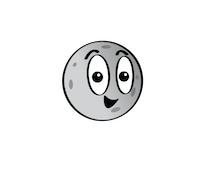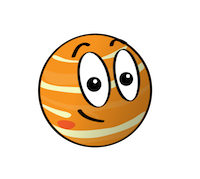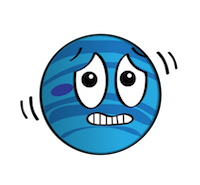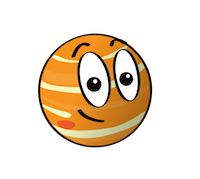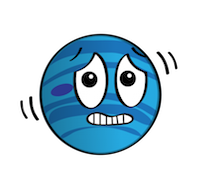Asteroids are small, rocky objects that orbit the sun. Although asteroids orbit the sun like planets, they are much smaller than planets.

A close-up image of the asteroid Ida taken by NASA's Galileo spacecraft. Image credit: NASA/JPL-Caltech/UCLA/MPS/DLR/IDA
There are lots of asteroids in our solar system. Most of them live in the main asteroid belt—a region between the orbits of Mars and Jupiter.

Most asteroids in our solar system can be found in the asteroid belt, between Mars and Jupiter.
Asteroids hang out in other places, too. For example, some asteroids are found in the orbital path of planets. This means that the asteroid and the planet follow the same path around the sun. Earth and a few other planets have asteroids like this.
Where did asteroids come from?
Asteroids are left over from the formation of our solar system. Our solar system began about 4.6 billion years ago when a big cloud of gas and dust collapsed. When this happened, most of the material fell to the center of the cloud and formed the sun.
Some of the condensing dust in the cloud became planets. The objects in the asteroid belt never had the chance to be incorporated into planets. They are leftovers from that time long ago when planets formed.
Are all asteroids the same?
No way! Because asteroids formed in different locations at different distances from the sun, no two asteroids are alike. Here are a few ways that they differ:
- Asteroids aren’t all round like planets. They have jagged and irregular shapes.
- Some asteroids are hundreds of miles in diameter, but many more are as small as pebbles.
- Most asteroids are made of different kinds of rocks, but some have clays or metals, such as nickel and iron.

Mathilde, Gaspra, and Ida are three asteroids that have been imaged by NASA spacecraft. In this image, you can see that asteroids come in a variety shapes and sizes. Image credit: NASA/JPL
What can we learn from asteroids?
Since asteroids formed at the same time as other objects in our solar system, these space rocks can give scientists lots of information about the history of planets and the sun. Scientists can learn about asteroids by studying meteorites: tiny bits of asteroids that have flown through our atmosphere and landed on Earth’s surface.
Several NASA space missions have also flown by and observed asteroids. The NEAR Shoemaker spacecraft landed on Eros, an asteroid near Earth, in 2001. Then, the Dawn spacecraft traveled to the asteroid belt in 2011. It orbited and studied the giant asteroid Vesta and the dwarf planet Ceres.
In 2016, NASA launched the OSIRIS-REx spacecraft to study an asteroid near Earth named Bennu. After studying Bennu for a few years, OSIRIS-REx scooped up a sample of dust and rocks from the asteroid’s surface.
Now, OSIRIS-REx is headed back to Earth! Its sample container will land in the Utah desert in September 2023. Scientists will then collect the container and examine the dust and rocks for clues about how planets formed and life began.

Artist’s conception of the OSIRIS-REx spacecraft at Bennu. Image credit: NASA/Goddard/University of Arizona
Will an asteroid ever hit Earth?
There are no known impact threats, but tiny meteors burn up in Earth’s atmosphere all the time! Watch this video to learn more from NASA asteroid expert Dr. Kelly Fast.



